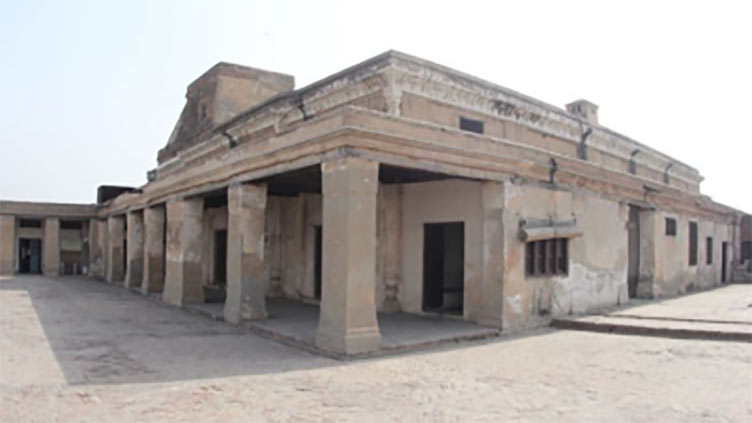Ancient scrolls found in Lahore Fort's Haveli Kharak Singh

Pakistan
Ancient scrolls found in Lahore Fort’s Haveli Kharak Singh
LAHORE (APP) – Centuries-old documents have been unearthed at the Haveli of Kharak Singh, nestled within the historic walls of Lahore’s Royal Fort (Shahi Qila).
According to sources in the Punjab Archaeology Department, these invaluable documents not only include rare maps, but also hold crucial information about the Mughal and Sikh tombs.
Right in the middle of grand Royal Fort of Lahore, the Haveli of Kharak Singh is located in the southeast corner of Jahangir’s quadrangle.
The quadrangle is a symbol of Mughal era and was built by Jahangir and his father Akbar.
It is believed that Kharak Singh was known as an important personality during the Sikh rule in Lahore.
The documents, which have been preserved for centuries within the confines of Kharak Singh’s Haveli, are now undergoing a cleaning process by experts from the Walled City of Lahore Authority (WCLA), the sources said.
Assigned to a team of diligent researchers, the ancient papers are gradually revealing their hidden secrets, they said.
Meanwhile, archaeologists working on the project have revealed that these documents span a vast timeline, encompassing the rise and fall of civilisations, from the Buddhist era to the Mughal Empire, Sikh rule and even the British colonial period.
To a query, sources said that among the treasures found are rare maps, dating back to the times when the world was still discovering ancient civilisations, such as the Indus Valley.
One notable inclusion is a document, authored by John Marshall, offering insight into the discovery of Mohenjo-Daro and Harappa, two pivotal sites in the history of archaeology.
The preservation of this historical treasure is of paramount importance. Specialized brushes, stone weights, gloves and protective eyewear are being employed to ensure the documents remain intact during the cleaning process.
The discovery of these documents in Kharak Singh’s Haveli holds the potential to reshape the understanding of the region’s history. By delving into the past, these ancient papers have the power to educate and inspire future generations, illuminating the rich tapestry of history that has unfolded in the heart of Lahore.
In the Royal Fort (Shahi Qila), presently, the first floor of this great haveli is being used by the Punjab Archeology Department, for Archeological Survey office and ground floor has the Archeology’s Library which is a remarkable house of antique books.
The library is worth visiting as it is open for all and one can surf through centuries-old books there.
Today, the surviving red stone ‘Sehdara’ (a building with three entrances) of Haveli alone provides the clue to the ancient lineage of the structure.
The structure of the Haveli is intact but still needs attention for restoration and conservation.
There are several rooms inside the Haveli and one can see the old fresco work on the walls and ceilings. The interior structure is a typical Sikh style of architecture with arches in it with few rooms are closed and others are under the use of the staff.
In 2019, archaeologists had unearthed a Shahi Hamam (Royal Bath) from Mughal Emperor Akbar’s reign in Shahi Qila. Officials from the WCLA discovered the ancient bath after clearing over 100,000 cubic feet of rubble, the APP learnt.
The bath is situated behind the area where Emperor Jahangir’s living quarters were located.
The structure is largely well preserved as it was constructed using red sandstone bricks.
The original water channels and chimneys to let out steam are still intact and clearly visible.


